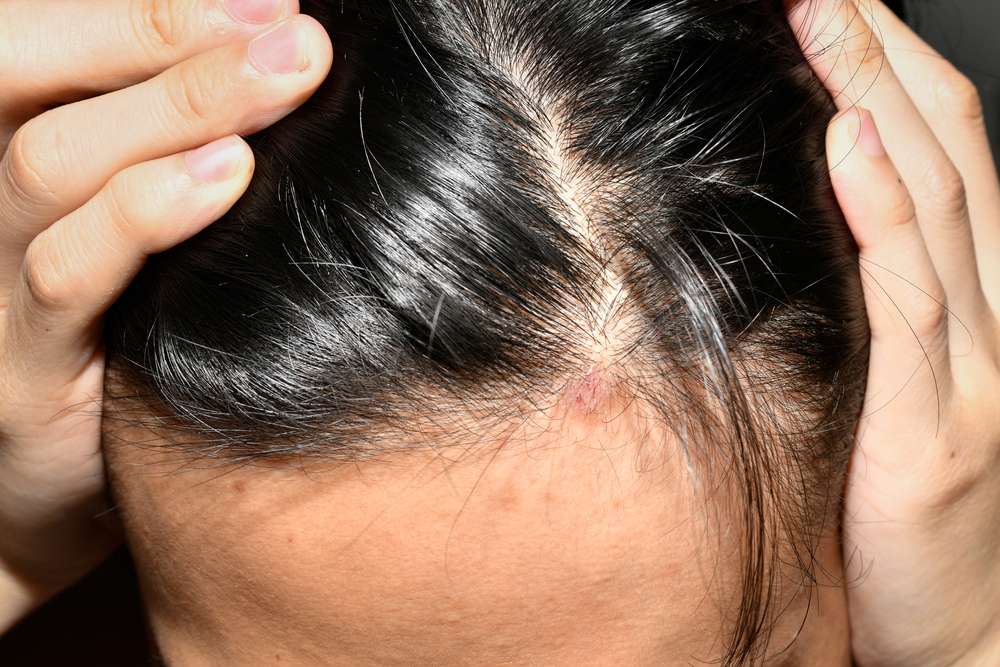Care for Scalp Psoriasis: Options and Daily Strategies
Scalp psoriasis can be persistent, uncomfortable, and visible, but a structured approach often reduces itching, scaling, and flare frequency. This article explains medical and home options, how stress ties into symptoms, and why consistency matters so you can work with a clinician to build a realistic routine that fits your day-to-day life.

Scalp psoriasis affects people in varied ways, from mild flaking at the hairline to thicker plaques that extend beyond the scalp. Because hair can limit medication contact and light exposure, finding a practical routine is essential. Treatments typically combine medicated shampoos, leave-on solutions or foams, and supportive care that makes products easier to use. Responses differ from person to person, and plans often require adjustment over time to balance effectiveness and skin comfort.
This article is for informational purposes only and should not be considered medical advice. Please consult a qualified healthcare professional for personalized guidance and treatment.
Types of scalp psoriasis treatments
Understanding the different types of scalp psoriasis treatments helps you and your clinician decide what to try first and how to rotate options. Common first-line choices include topical corticosteroids in solutions, lotions, foams, or sprays designed to penetrate hair and reach the skin. Vitamin D analogs such as calcipotriene may be used alone or in combination with steroids. Medicated shampoos with coal tar or salicylic acid can soften and lift scale, improving penetration of leave-on medications. For some, handheld narrowband UVB or UV comb devices target the scalp while parting the hair to allow light through. When scalp involvement is part of more extensive or stubborn psoriasis, systemic therapies (such as methotrexate, acitretin, cyclosporine, or biologic agents that target specific immune pathways) may be considered and require medical supervision.
How does stress management help?
Stress is a common trigger for psoriasis flares and can intensify itching and sleep disruption, which then worsens stress—a difficult cycle. How stress management supports scalp psoriasis treatment is by lowering the overall inflammatory burden and making it easier to follow daily care plans. Approaches that many people find useful include brief, regular mindfulness practices, cognitive-behavioral strategies for coping with flares, and paced breathing to reduce arousal. Consistent sleep routines, light-to-moderate exercise as tolerated, and social support also contribute to resilience. Keeping expectations realistic—aiming for “better control,” not perfection—reduces pressure and helps sustain habits.
Why stick to a consistent plan?
The importance of following a consistent treatment plan is often underestimated. Many therapies work best when used exactly as directed and tapering is critical for steroid products to minimize rebound. Shampoos usually need a contact time of several minutes before rinsing, and leave-on solutions often perform better when applied to parted sections of the scalp. Consistency also helps you and your clinician judge what is working; frequent changes make it hard to tell. Record flare patterns, triggers, and product reactions in a simple log. If irritation, stinging, or increased shedding occurs, share details with a healthcare professional to adjust frequency, vehicle (foam vs. solution), or move to a steroid-sparing option.
Natural and home-based approaches
Natural and home based approaches for scalp psoriasis can complement medical care. A gentle routine may include a pre-shampoo oil soak with mineral or coconut oil to loosen scale, followed by a medicated shampoo as advised. Avoid forcefully picking plaques, which can worsen lesions (Koebner phenomenon). Some people find relief using diluted apple cider vinegar on intact skin to calm itch; discontinue if burning occurs or skin is broken. Aloe vera gels can soothe dryness for some, though evidence is limited. Tea tree oil may irritate sensitive skin and should be patch tested or avoided. Short, cautious exposure to natural sunlight may help, but protect unaffected skin and avoid sunburn. Lifestyle measures—nutrient-dense meals with vegetables, whole grains, and omega‑3–rich fish; limited alcohol; and not smoking—support overall skin health, though results vary.
Making treatments easier to use
Practical adjustments can improve adherence and comfort. Ask about vehicles designed for hair-bearing areas, such as foams, gels, or sprays that dry quickly. Use a few strategic hair parts to apply leave-on medications directly to the skin rather than the hair shaft. For thick scale, a keratolytic (for example, salicylic acid) can be scheduled a few times each week before active treatments. Plan medication times around your routine—shampoos in the shower with a timer for contact time, leave-ons in the evening to reduce daytime residue—and protect clothing or pillowcases when products may stain. Rotate hats, brushes, and pillowcases and keep them clean to reduce irritation and product buildup.
When to seek additional support
Consider professional review if plaques are painful, rapidly spreading, interfering with sleep or daily activities, or if over-the-counter approaches are not helping after several weeks. Signs of infection (oozing, increased warmth, tenderness) require prompt attention. If joint stiffness or swelling appears, discuss evaluation for psoriatic arthritis. For people considering phototherapy or systemic medications, a clinician can assess suitability based on other health conditions and medications, monitor safety labs, and guide stepwise adjustments to reach stable control with the fewest side effects.
Bringing it together
Managing scalp psoriasis is a process of matching effective treatments with daily life and adjusting as needs change. Combining evidence-based medical therapies with stress reduction, gentle scalp care, and steady routines often yields the most reliable improvement. With patience, tracking, and open communication with a healthcare professional, many people find a sustainable pattern that reduces itch, scale, and flare frequency over time.




